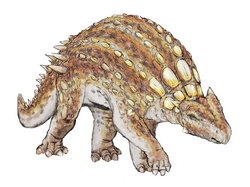| Bungil Formation | |
|---|---|
| Stratigraphic range: Valanginian-Aptian [1] ~ | |
| Type | Geological formation |
| Unit of | Blythesdale Group |
| Sub-units | Claravale Sandstone, Kingull, Minmi & Nullawurt Sandstone Members |
| Underlies | Wallumbilla Formation |
| Overlies | Mooga Sandstone |
| Thickness | Up to 269 m (883 ft) |
| Lithology | |
| Primary | Siltstone, mudstone |
| Other | Sandstone, coal |
| Location | |
| Coordinates | 26°38′31.50″S148°48′36.18″E / 26.6420833°S 148.8100500°E |
| Approximate paleocoordinates | 71°00′S122°54′E / 71.0°S 122.9°E |
| Region | Queensland |
| Country | Australia |
| Extent | Surat Basin |
The Bungil Formation is a geological formation in Australia whose strata date back to the Early Cretaceous. Dinosaur remains are among the fossils that have been recovered from the formation. [1]

